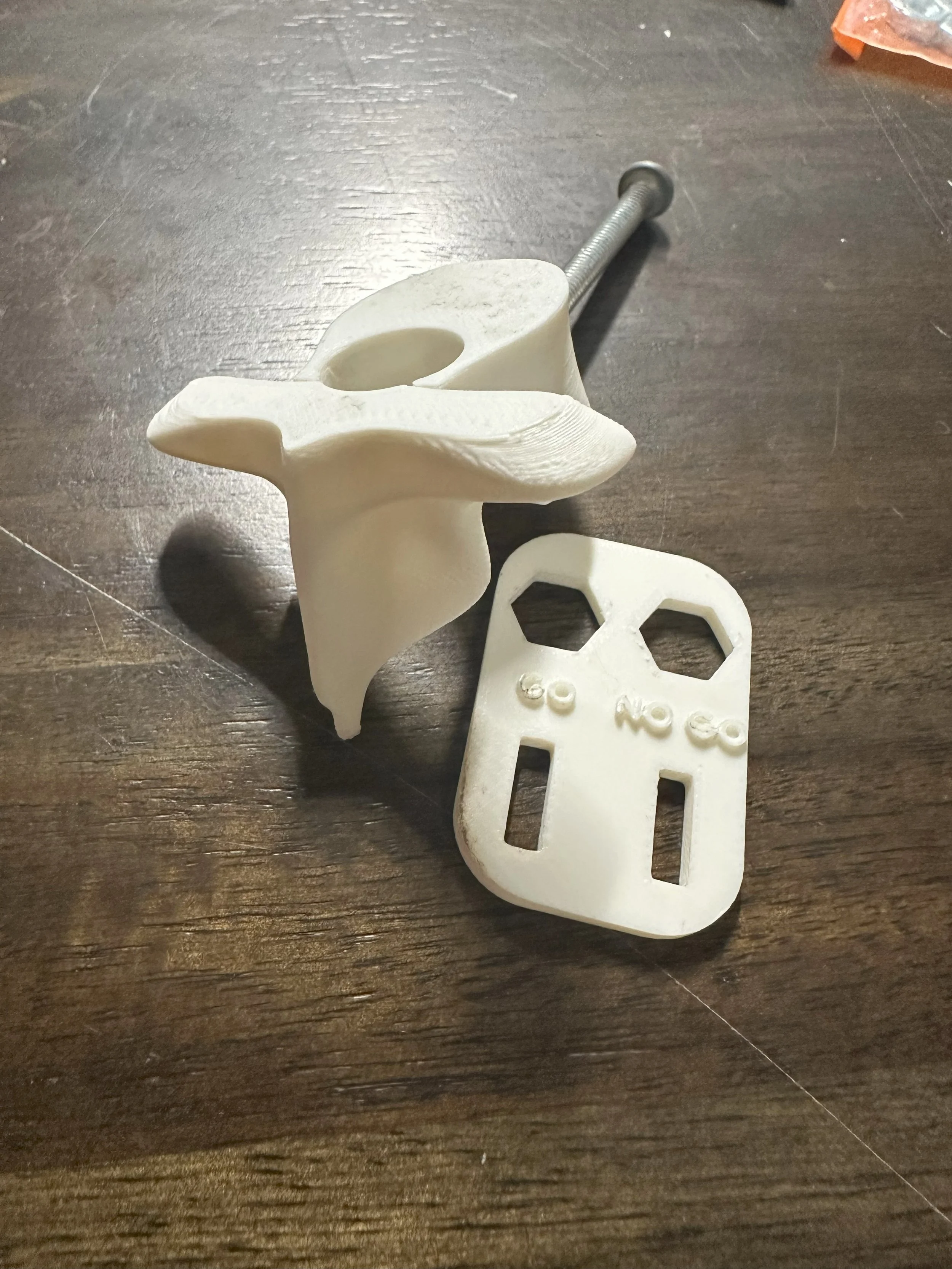Vertebrae Go/No-Go Hex Nut Problem
Output: Inspection tool, Data analysis
Field: Quality Control
Technical Skills: Inspection techniques, Quality Control, Tolerance analysis, CAD design
Soft Skills: Technical Communication, Repeatability, Process Improvement
Equipment: CAD software, Calipers, some hex nuts
Timeline: 1 week
Problem
Wayne Enterprise is developing a new vertebrae device that requires off-the-shelf hex nuts to fit precisely into a designated slot. However, standard nut manufacturers only control the inner diameter—they don’t care about the outer diameter or thickness.
As a result, some nuts won’t fit, while others are too loose. Simply inspecting by hand is slow and unreliable.
Wayne Enterprise needs a fast, repeatable way to ensure only properly sized nuts are used.
Your job is to develop a Go/No-Go gauge to quickly identify acceptable parts.
Buy a set of at least 10 hex nuts 8-32.
Measure the largest outer diameter (corner-to-corner) and thickness of each nut.
Find the average outer diameter and thickness
Determine tolerance limits for Go/No-Go inspection via empirical rule for normal distribution to get at most 70% of the hex nuts
Empirical Rule: 68% of the data falls within one standard deviation of the mean, 95.45% of the data falls within two standard deviations, and 99.73% of the data falls within three standard deviations.
Design a Go/No-Go gauge based on your measurements
Go / No-Go gauges are inspection tools to quickly check the dimension of a part. A dimension can not always be perfect, so there is a tolerance window. The go feature prevents any dimension that is too big, and the no-go feature prevents any dimensions that is too small.
Example: The nominal length of a part is 1in with a tolerance of 0.1in. That means its tolerance window allows for lengths less than 1.1in and greater than 0.9in.
Go feature: Should allow lengths less than 1.1in to go through, and captures any lengths greater than 1.1 in
No-Go feature: Should not allow lengths less than 0.9in to go through, but should allow, and captures any lengths less than 0.9in
Create a technical drawing with critical dimensions clearly defined.
Critical dimensions are bubbled
Fabricate the Go/No-Go gauge (3D print, hand made, or machined).
Verify the tool by comparing the critical dimensions against the technical drawing.
[Optional] Compare efficiency: Measure the time it takes to inspect nuts with calipers vs. using the tool -
Will show measurable results which you can put in your resume or portfolio
[Optional] 3D print something like a vertebrae to demonstrate fitment.
Will have a photo that looks cool



